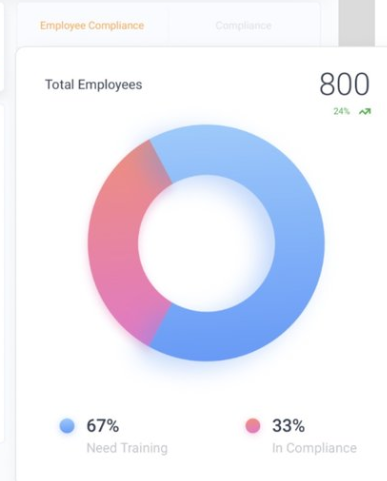Experiments with organizations
In the past 5-10 years, we’ve seen businesses increasingly experiment with different organizational structures, including “holacracy” and similar concepts like “self-management.” In most organizations, though, hierarchy persists. And while hierarchy has some negative elements to it, by and large, it makes sense. It helps the human brain organize who is responsible for whom, whom to contact for what, and how decisions get made.
As a result of the sheer number of organizations that use a standard hierarchical structure, though, company culture tends to come from the top. The mission statement is usually defined by the founders and revised (if this happens) by subsequent senior leaders. It’s very rare that an entry-level employee would be at the table when cultural contexts are being defined.
It can seem hard to impact your company’s culture from any role on the team, then. But in reality, it’s not as hard as you might think.
First, think of what culture actually is
It’s not words on a sheet on a wall somewhere. It’s not posters of cats hanging from clotheslines in the break room.
It is the living and breathing of that company every day. It’s how work gets done, the process. It’s how people greet each other in the morning, how people interact in that same break room, how conflicts are handled and joyous moments are celebrated. That’s what culture actually is. If you think of it in that way, then everyone automatically is contributing because they are a part of the bigger ecosystem, and their part contributes to the culture just as much as any other, regardless of compensation, decision-making authority, size of office, or anything else.
Think for a second about toxic employees. Even a low-level, toxic employee can greatly impact the culture because other employees want to disengage, work falls through the cracks, and people feel negative about meetings and even coming to work. That’s not a fun example, no, but it’s an example of how any employee, regardless of level and rank, can shift the culture one way or the other.
In the same vein, think of a movie like Rudy. For the entire film, Rudy is the mutt of glorious Notre Dame football. Whether or not he was offsides (ha), he remains one of only two people in Notre Dame history carried off the field by his teammates. Most offices have a Rudy: a spunky, high-energy, committed-to-the-brand young buck at a low level. That office Rudy inspires people to work harder and better. Even small cogs of good and bad can shift a culture.
What you need to do as an employee at your level
You cannot impact culture from lower levels without some form of respect from upper levels and peers unless your impact will be negative. The only path to a positive impact on culture from your level is to be seen as an employee that:
- Shows up on time
- Works hard
- Is always professional
- Delivers for clients and customers
- Defers when you need to defer
- Learns from others
If you are seen as that type of employee, it’s then possible to push the edges a little bit, and:
- Speak up more in meetings
- Push back on ideas
- Attempt to motivate/encourage others
- Ask for more responsibilities
- Have small pockets of leadership and management
If you try to do the second set of bullet points before establishing the first, the reaction might be negative. Many managers do not like people asking for more until that baseline of professionalism and hard work has been set firmly. Once you have a baseline, you can get more for yourself, and you can contribute even more to the culture of the organization.
Be an advocate
Finally, go to HR to offer your help with recruiting. Often, recruiting is drowning in new requisitions and trying to find time on the calendars of hiring managers, plus the logistics of active searches. We speak often of “employer brand,” and it is valuable, but the recruiting function doesn’t always have the time to strategically manage what that needs to be done. So, go to them and offer to attend local networking events and happy hours to be an advocate for what the internal culture is like. Offer to do peer interviews where applicable and be a “face” of the business. Now, you’re unquestionably impacting the culture because you’re out there in your business’ market, setting the tone of what it would be like to work there. You’re basically doing business development, even if some might think of it only as networking. That’s hugely powerful.
Always remember
Culture might be set in terms of documents by the highest ranks, but it’s lived and breathed by everyone, every day, in cubicles, offices, conference rooms, and on Zoom and Skype calls. You have your impact on it, too, and it can be a massive impact if you’re willing to set your professionalism baseline and put in the work.
It’s imperative that culture be sustainable and permeate throughout the entire workforce. Employee engagement and investment are key factors in creating a culture that does more than coming from the top down. To learn more about company culture, including how to promote an organizational culture that is positive and sustainable, check out King University’s guide What’s All the Buzz About? The Importance of Company Culture.
You can learn the latest in this and other business topics by earning an online MBA through King University. Throughout the program, you’ll study management, research, theoretical systems, quantitative analysis, ethical practices, and more, preparing you to become an effective and strategic business leader in a variety of settings. Designed with working students in mind, their flexible program can fit easily into your schedule, and no GMAT is required.


